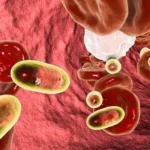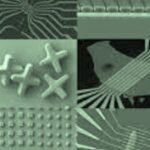Nanorobotics has emerged as a groundbreaking field at the intersection of nanotechnology and robotics, offering the potential to revolutionize technology, healthcare, and various industries. In a world seeking solutions at the smallest scales, the technology represents a transformative shift towards manipulating matter at the nanoscale for unprecedented applications. This comprehensive exploration delves into nanorobotics, uncovering its significance, technological advancements, diverse applications, and transformative potential for science, medicine, and beyond.
The Significance of Nanorobotics
Nanorobotics signifies a profound change in our ability to manipulate and control matter at the nanoscale. As we venture into the realms of atomic precision and molecular manipulation, nanorobotics has the potential to impact various aspects of our lives.
Precision Engineering at the Nanoscale
One of the primary benefits of nanorobotics is its ability to perform precise tasks at the atomic and molecular levels. These tiny machines can manipulate individual atoms and molecules with unprecedented accuracy. This precision engineering opens the door to novel material synthesis, advanced manufacturing techniques, and groundbreaking discoveries in fundamental science.
Healthcare and Medicine
Nanorobotics holds immense promise in the field of healthcare and medicine. These minuscule robots can navigate the human body, diagnose diseases, deliver drugs with pinpoint accuracy, and even perform microsurgery. By operating at the cellular and molecular levels, nanorobots offer the potential for less invasive and more effective medical treatments, leading to improved patient outcomes and a higher quality of life.
Environmental Remediation
Nanorobotics can play a pivotal role in environmental remediation efforts. These tiny machines can target and remove pollutants, toxins, and contaminants at the molecular level, helping to clean up polluted water, soil, and air. This has the potential to mitigate the detrimental effects of pollution and contribute to a more sustainable and cleaner environment.
Advanced Materials
Nanorobotics enables the development of advanced materials with unprecedented properties. Nanorobots can create stronger, lighter, and more durable materials by precisely arranging atoms and molecules. These materials can find applications in aerospace, construction, and various industries, leading to innovative products and improved efficiency.
Advanced Technologies in Nanorobotics
Nanorobotics relies on a range of advanced technologies to function at the nanoscale.
Molecular Machines
Molecular machines are the heart of nanorobotics. These are nanoscale devices composed of molecules that can perform mechanical tasks when provided with energy. Molecular machines are designed to mimic biological systems and can be programmed to perform specific functions.
Nanosensors
Nanosensors are critical components of nanorobotics, enabling robots to perceive their surroundings at the nanoscale. These sensors can detect changes in temperature, pressure, chemical composition, and other parameters, allowing nanorobots to respond to their environment and carry out tasks with precision.
Energy Sources
Nanorobots require a stable and compact energy source to operate effectively. Researchers are exploring various energy solutions, including nanoscale power generators and energy-harvesting mechanisms, to ensure that nanorobots have the necessary power to perform their tasks.
Applications of Nanorobotics
Nanorobotics has a wide range of applications across various sectors, each harnessing the power of nanoscale manipulation.
Medicine and Healthcare
In healthcare, nanorobots have the potential to revolutionize diagnostics and treatment. They can perform targeted drug delivery, detect diseases at early stages, and assist in surgeries with unparalleled precision. Nanorobots promise to make medical interventions less invasive and more effective, improving patient outcomes.
Manufacturing and Materials Science
Nanorobots can advance manufacturing processes by enabling the creation of materials with unique properties. They can assemble complex structures atom by atom, resulting in stronger, lighter, and more durable materials. These materials can find applications in aerospace, electronics, and countless industries.
Environmental Cleanup
Nanorobots can be deployed to clean up polluted environments by targeting and removing contaminants at the molecular level. This approach can potentially address some of the most challenging environmental problems, from cleaning up oil spills to removing heavy metals from water sources.
Electronics and Computing
Nanorobots can be used in electronics to build and repair circuits at the nanoscale. This could lead to developing more powerful and energy-efficient electronic devices, further advancing the computing and information technology field.
Challenges and Ethical Considerations
While nanorobotics offers immense promise, it also presents challenges and ethical considerations that demand careful consideration.
Safety and Control
Ensuring the safety and control of nanorobots is paramount. Researchers must develop robust fail-safes and mechanisms to prevent unintended consequences, such as uncontrolled replication or malfunction. These safeguards will be essential to guarantee the responsible use of nanorobotic technology.
Ethical Use
Ethical considerations encompass the responsible use of nanorobots. As with any advanced technology, there is potential misuse, including surveillance, invasion of privacy, and unauthorized access to nanorobotic systems. Ethical guidelines must be established to govern the ethical use of nanorobotic capabilities.
Regulation and Oversight
The development and deployment of nanorobots require robust regulatory frameworks and oversight. These frameworks will ensure that nanorobotics benefit society while minimizing risks. Establishing ethical and regulatory guidelines will be a crucial step in shaping the responsible future of nanorobotics.
The Future of Nanorobotics
Nanorobotics is poised to assume an even more substantial role in shaping the future of technology, healthcare, and various industries.
Miniaturization and Integration
Researchers aim to miniaturize further and integrate nanorobots into everyday applications. This could lead to wearable medical devices, advanced drug delivery systems, and more accessible nanorobotic technologies that enhance human well-being.
Interdisciplinary Collaboration
The future of nanorobotics hinges on interdisciplinary collaboration. Experts in nanotechnology, robotics, biology, and medicine must work together to drive innovation and unlock new possibilities for nanorobotic applications. This cross-disciplinary approach will foster the development of increasingly sophisticated nanorobots.
Ethical and Regulatory Frameworks
Developing comprehensive ethical and regulatory frameworks will become increasingly important as nanorobotic technologies advance. These frameworks will guide research, development, and deployment, ensuring that nanorobotics align with societal values and priorities.
Conclusion
Nanorobotics is a transformative force, empowering humanity to manipulate matter at the smallest scale. Its significance lies in the potential to unlock new frontiers in science, healthcare, manufacturing, and environmental stewardship. As technology advances, ethical considerations, safety measures, and regulatory oversight must guide its development and deployment. The future it envisions is where precision engineering and innovation at the nanoscale enhance human well-being, drive technological progress, and shape a more advanced and sustainable world. Nanorobotics is the architect of a future where the tiniest machines wield the greatest impact.










